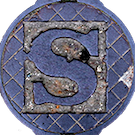Page Schemas: Difference between revisions
No edit summary |
(→Creating a new Schema: new section) |
||
| Line 25: | Line 25: | ||
A page is only ever loosely connected to a schema (rather than strictly, ie. can only have/requires the schema's fields) through its category. Page schemas then generates a template for the category. Typically templates will add a page to a category anyway ([ [Category:CategoryName] ]). So a page can have multiple schemas - that would just look like using multiple templates on the same page. | A page is only ever loosely connected to a schema (rather than strictly, ie. can only have/requires the schema's fields) through its category. Page schemas then generates a template for the category. Typically templates will add a page to a category anyway ([ [Category:CategoryName] ]). So a page can have multiple schemas - that would just look like using multiple templates on the same page. | ||
|Link=https://discord.com/channels/1029514961782849607/1038988750677606432/1041059559541841940 | |Link=https://discord.com/channels/1029514961782849607/1038988750677606432/1041059559541841940 | ||
}} | |||
== Creating a new Schema == | |||
{{Message | |||
|Author=sneakers-the-rat | |||
|Avatar=https://cdn.discordapp.com/avatars/305044217393053697/2970b22bd769d0cd0ee1de79be500e85.png?size=1024 | |||
|Date Sent=22-11-12 19:32:48 | |||
|Channel=discourse-modeling | |||
|Text=[[Page Schemas#Creating a new Schema]] | |||
Page schemas is mostly a handy way to generate boilerplate templates and link them to semantic properties. A Form (using [[Page Forms]] is something that is an interface for filling in values for a template. | |||
For an example of how this shakes out, see | |||
[[:Category:Participant]] | |||
[[Template:Participant]] | |||
[[Form:Participant]] | |||
* go to a `Category:CategoryName` page, creating it if it doesn't already exist. | |||
* Click "Create schema" in top right | |||
* If you want a form, check the "Form" box. it is possible to make a schema without a form. The schema just defines what pages will be generated, and the generated pages can be further edited afterwards (note that this might make them inconsistent with the schema) | |||
* Click "add template" If you are only planning on having one template per category, name the template the same thing as the category. | |||
* Add fields! Each field can have a corresponding form input (with a type, eg. a textbox, token input, date selector, etc.) and a semantic property. | |||
* Once you're finished, save the schema | |||
* Click "Generate pages" on the category page. Typically you want to uncheck any pages that are already bluelinks so you don't overwrite them. You might have to do the 'generate pages' step a few times, and it can take a few minutes, bc it's pretty buggy. | |||
|Link=https://discord.com/channels/1029514961782849607/1038988750677606432/1041073096687370250 | |||
}} | }} | ||
Latest revision as of 19:31, 12 November 2022
Discord
Info on using Page Schemas: So you could only need to make schemas for the different types of nodes that you'd want, so if i'm reading right then yes you would have several hundred pages but only 4-5 schemas.
A schema is defined (using page schemas) from a Category Page
A page is only ever loosely connected to a schema (rather than strictly, ie. can only have/requires the schema's fields) through its categ
Info on using Page Schemas: So you could only need to make schemas for the different types of nodes that you'd want, so if i'm reading right then yes you would have several hundred pages but only 4-5 schemas.
A schema is defined (using page schemas) from a Category Page
A page is only ever loosely connected to a schema (rather than strictly, ie. can only have/requires the schema's fields) through its category. Page schemas then generates a template for the category. Typically templates will add a page to a category anyway ([ [Category:CategoryName] ]). So a page can have multiple schemas - that would just look like using multiple templates on the same page.
Creating a new Schema
Page Schemas#Creating a new Schema Page schemas is mostly a handy way to generate boilerplate templates and link them to semantic properties. A Form (using Page Forms is something that is an interface for filling in values for a template.
For an example of how this shakes out, see Category:Participant Template:Participant Form:Participant
- go to a `Category:CategoryName` page, creating it if it doesn't already exist.
- Click "Create schema" in top right
- If you want a form, check the "Form" box. it is possible to make a schema without a form. The schema just defines what pages will be generated, and the generated pages can be further edited afterwards (note that this might make them inconsistent with the schema)
- Click "add template" If you are only planning on having one template per category, name the template the same thing as the category.
- Add fields! Each field can have a corresponding form input (with a type, eg. a textbox, token input, date selector, etc.) and a semantic property.
- Once you're finished, save the schema
- Click "Generate pages" on the category page. Typically you want to uncheck any pages that are already bluelinks so you don't overwrite them. You might have to do the 'generate pages' step a few times, and it can take a few minutes, bc it's pretty buggy.
